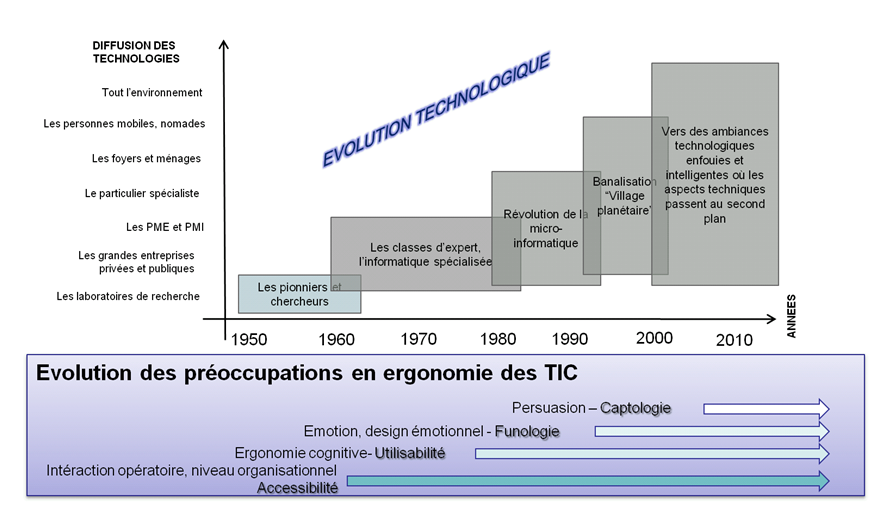 Testing the demands and expectations of our clients as UX consultants, it appears that there is sometimes some confusion between all these terms. So, when you are not a specialist, can you try to see more clearly in a few dozen lines?
Testing the demands and expectations of our clients as UX consultants, it appears that there is sometimes some confusion between all these terms. So, when you are not a specialist, can you try to see more clearly in a few dozen lines?
Design Thinking ?
Just like the designer and design in general, the DTh is still too often associated in a reductive way with work on graphics, the look and feel (while design = purpose/project/conception). In reality, it's a design process slowly released from Stanford in the 80s (already!). This process is based on methods of "empathy" with the user, exploration and analysis, ideation, prototyping and testing. DTh is therefore not UX, but it has to do with the extent to which this process is supposed to allow the development of an innovative product or service, centered on the user and offering the latter an optimal experience. As such, it can therefore be implemented by UX consultants and all this would deserve much more development outside the scope of this post.
From ergonomics to UX?
The two terms are sometimes applied to us interchangeably. One may seem more or less “old school”, the other newer and more open. What about? The diagram below by Christian Bastien and Eric Brangier (from the excellent University of Metz that I was able to visit) illustrates well the evolution of ergonomics in correlation with technologies and their diffusion.
THEergonomics (érgon/nómos = work/law) is a term that appeared during the XNUMXth century. Its aim is to adapt the requirements of activity situations to the functioning (in the broad sense) of the human body. This requires mobilizing a set of fields in the human sciences (physical, physiological, psychological, psychosocial, cognitive aspects, etc.) and engineering sciences. The concern thus translated obviously precedes the word. The design of the pickaxe handle and the spout of the saucepan is already ergonomics and user experience.
In the area that concerns us here, the web, ergonomics quickly imposed itself, in particular with the notion ofusability, to "civilize" web pages whose beginnings were sometimes rough. To be effective (goal achievement), be efficient (simplification of tasks), this obeys hundreds, even thousands of rules which have been published and made usable by an effort of theorization and grouping, up to the publication of standards (AFNOR, ISO). On the French side, recognized from an international point of view, let us quote the recommendations and ergonomic web criteria of Bastien and Scapin, extended to virtual environments in general by Bach and Scapin, and also the heuristics of Nielsen or the principles drawn from the Gestalt . The major bases of HMI ergonomics are now fairly widely disseminated on the web and totally off-topic sites are increasingly rare, although….
THEUser experience – UX – appeared in the 1990s from the work of Norman. The advantages brought to the user by an effective and efficient product, qualities that are always essential, are not always enough for him. We must also offer them benefits in terms of affects, emotions, values. There is therefore an evolution in the concerns of ergonomics on aspects which had escaped it in part until now. The integration of social, behavioral and affective aspects, particularly important in online interactions (primary in e-commerce and games) leads to UX; designing the interface, of course, but more generally the experience it generates, possibly extended to its extensions in the user's mental and physical life (emotional design, persuasive design, etc.). Ergonomics integrates new contributions and hybridizes with other disciplines, I'm thinking here of marketing for example. It is therefore a question of mobilizing a large number of transversal skills. But since we are always looking for the same goals, namely adapting the requirements of activity situations to the user, UX is therefore a deepening of ergonomics, an adaptation to new requirements.
Here ! Of course, we are not (yet) there in all our missions, but let's remember that really dealing with UX obviously implies knowing the users well and when people talk to you about UX without ever involving them, be careful!
Marie Serindou, UX-Evangelist @UXRepublic
UX/UI ECO-DESIGN # Paris
SMILE Paris
163 quay of Doctor Dervaux 92600 Asnières-sur-Seine
DESIGN THINKING: CREATING INNOVATION # Belgium
UX-REPUBLIC Belgium
12 avenue de Broqueville - 1150 Woluwe-Saint-Pierre
MANAGING AND MEASURING UX # Paris
SMILE Paris
163 quay of Doctor Dervaux 92600 Asnières-sur-Seine
DESIGN SPRINT: INITIATION & FACILITATION # Paris
SMILE Paris
163 quay of Doctor Dervaux 92600 Asnières-sur-Seine
UX-DESIGN: THE FUNDAMENTALS # Belgium
UX-REPUBLIC Belgium
12 avenue de Broqueville - 1150 Woluwe-Saint-Pierre
GOOGLE ANALYTICS 4 #Paris
SMILE Paris
163 quay of Doctor Dervaux 92600 Asnières-sur-Seine
ACCESSIBLE UX/UI DESIGN # Belgium
UX-REPUBLIC Belgium
12 avenue de Broqueville - 1150 Woluwe-Saint-Pierre
EXPERIENCE MAPPING # Paris
SMILE Paris
163 quay of Doctor Dervaux 92600 Asnières-sur-Seine













